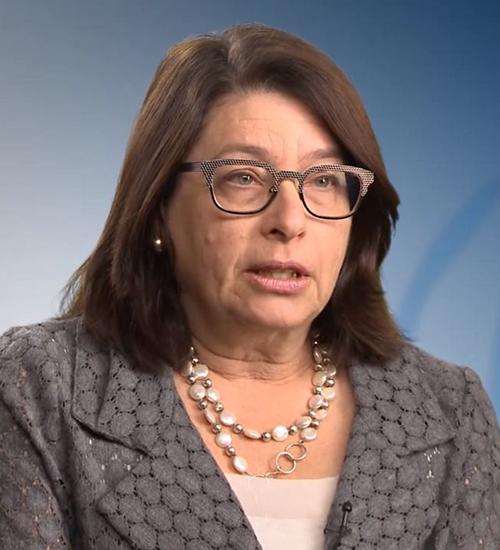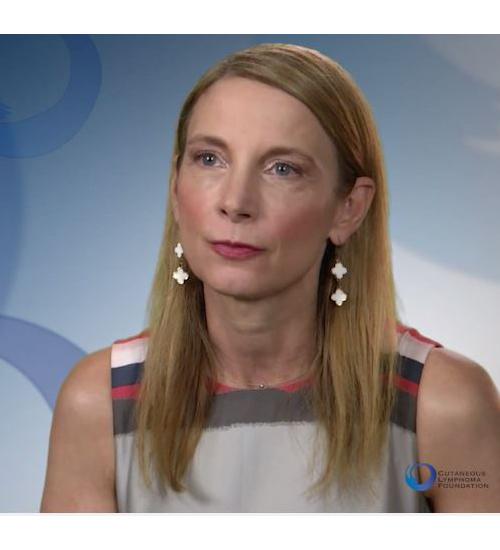Primary cutaneous anaplastic large cell lymphoma (PCALCL) is a subtype of cutaneous T-cell lymphoma (CTCL), and is a non-Hodgkin lymphoma (cancer of the white blood cells) that arises in the skin. PCALCL is named from the description of the size and shape of the cells under the microscope (“anaplastic large cell”), and is characterized by the presence of a molecule on the lymphoma cells called CD30.
It is important to know that there are two types of ALCL:
- Systemic (or nodal) ALCL, which can affect the skin and/or lymph nodes and other internal organs;
- Primary cutaneous ALCL, which affects the skin primarily.
PCALCL is considered a skin lymphoma, but is sometimes considered a variant of systemic ALCL. PCALCL is part of a family of primary cutaneous CD30+ lymphoproliferative disorders (CD30+ LPD). The CD30+ LPDs also includes lymphomatoid papulosis (LyP) and “borderline cases” that are somewhere between LyP and PCALCL. The CD30+ LPDs as a group account for approximately 10% of cutaneous lymphomas. PCACL generally has an excellent prognosis when compared to systemic ALCL.
There are no known risk factors for PCALCL.
The disease can affect people of all ages, including children, but is most commonly found in adults 45 to 60 years old, and occurs more often in men than women.
EXPERT PRESENTERS
Lauren Pinter-Brown, MD, Professor, Department of Medicine, Division of Hematology/Oncology, UC Irvine Medical Center
(At time of publication: Clinical Professor of Medicine, David Geffen School of Medicine, UCLA School of Medicine)
Stuart Lessin, MD, Medical Director, KGL Skin Study Center
Christiane Querfeld, MD, Director, Cutaneous Lymphoma Program, City of Hope Comprehensive Cancer Center
Typical procedures done to diagnose primary cutaneous anaplastic large cell lymphoma requires:
- A complete physical exam (including a thorough skin exam);
- Skin and/or lymph node biopsy (removal of a small piece of tissue) for examination under the microscope by a pathologist (a doctor who studies tissues and cells to identify diseases);
- Blood tests;
- Imaging tests such as CT (computerized axial tomography and/or PET (positron emission tomography) scans. If imaging tests show lymph node or other organ involvement, a bone marrow biopsy, in which soft tissue is removed from inside the bone, might also be performed.
It is important to know that there is no reliable way to tell systemic ALCL apart from primary cutaneous ALCL based only on a skin biopsy. The accurate diagnosis of PCALCL relies on examining the skin and imaging studies to verify that it is only in the skin and not lymph nodes or other organs at the time of diagnosis. Is also very important that any diagnosis of skin lymphoma is confirmed by a pathologist who has expertise in diagnosing cutaneous lymphomas.
There are different stages of PCALCL. It’s very important to know that the staging systemic for PCALCL is different than the staging systemic for systemic ALCL. The staging of PCALCL is based on a TNM system:
T:
T1
Only a single spot or area of the skin is involved.
T2
Multiple skin lesions in one area or adjacent areas of the body. Either of the following may be true: the skin contains dry, red, scaly patches, but no tumors. Enlarged lymph nodes may be present, but they do not contain cancer cells. Or, there are tumors on the skin and lymph nodes are either normal or larger than normal, but they do not contain cancer cells.
T3
Skin lesions of widespread areas of skin, such as areas far apart on the body or 3 adjacent areas.
N:
N0
No lymph node involvement
N1 – 3
Lymph node involvement
M:
M0
No other organ involvement
M1
Organ (non-lymph node) involvement
For example, someone with a single lesion on the body and no lymph node or organ involvement would be stage T1N0M0.
EXPERT PRESENTERS
Lauren Pinter-Brown, MD, Professor, Department of Medicine, Division of Hematology/Oncology, UC Irvine Medical Center
(At time of publication: Clinical Professor of Medicine, David Geffen School of Medicine, UCLA School of Medicine)
Christiane Querfeld, MD, Director, Cutaneous Lymphoma Program, City of Hope Comprehensive Cancer Center
Stuart Lessin, MD, Medical Director, KGL Skin Study Center
There are many options for treating PCALCL available, but localized treatment with either radiation therapy or surgical excision are the preferred therapies for single lesions of PCALCL. Radiation therapy is most commonly used, and has a response rate of 100%. Radiation therapy has been shown to be more effective and longer lasting than using multi-agent (“traditional”) chemotherapy.
For multiple or widespread lesions in which radiation therapy or surgery aren’t good options, there are several possible alternatives for treating PCALCL. As research is continuously changing, there may be other options that are not listed here:
- Bexarotene (Targretin®) capsules
- Brentuximab vedotin
- CHOP (cyclophosphamide, doxorubicin, vincristine, prednisone) chemotherapy
- CVP (cyclophosphamide, vincristine, prednisone) chemotherapy
- Imiquimod
- Low doses of methotrexate (Trexall)
- Nitrogen mustard (Mustargen topical)
- PUVA (Psoralen and ultraviolet-A light)
- Thalidomide
All of these therapies are effective in treating the disease, although relapse is common and, therefore, long-term follow-up care is required.
EXPERT PRESENTERS
Stuart Lessin, MD, Medical Director, KGL Skin Study Center
Christiane Querfeld, MD, Director, Cutaneous Lymphoma Program, City of Hope Comprehensive Cancer Center
Lauren Pinter-Brown, MD, Professor, Department of Medicine, Division of Hematology/Oncology, UC Irvine Medical Center (At time of publication: Clinical Professor of Medicine, David Geffen School of Medicine, UCLA School of Medicine)
Clinical trials are crucial in identifying effective drugs, prognostic strategies and determining optimal doses for lymphoma patients. If you are interested in participating in a clinical trial, talk to your doctor about an appropriate trial for you.
Complementary and alternative medicines are nonstandard therapies that may help patients cope with their cancer and its treatment, but that should not be used in place of standard treatment. No alternative therapy has ever been proven effective against lymphoma. However, complementary therapies such as meditation, yoga, acupuncture, exercise, diet and relaxation techniques have been shown to be effective in combating some treatment side effects and for improving your overall health during therapy. Before embarking on any complementary therapies, patients should discuss the matter with their healthcare team. Certain unproven treatments, including some herbal supplements, can interfere with standard lymphoma treatments or may cause serious side effects.
2021 Virtual Conference: LyP and PCALCL - Dr. Farah Abdulla provides an overview of CD30+ Lymphoproliferative disorders, including lymphomatoid papulosis (LyP) and primary cutaneous anaplastic large cell lymphoma (PCALCL).





